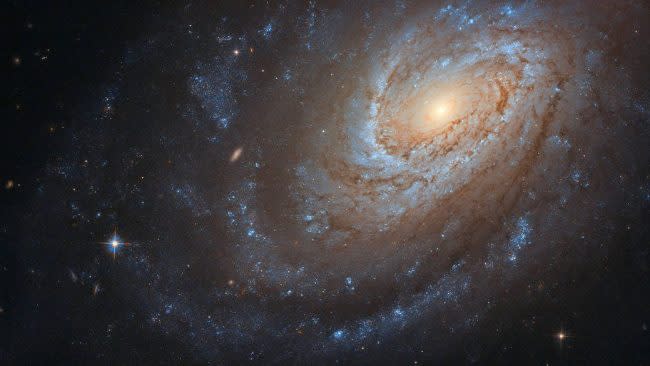New research reveals the odds of life evolving on alien worlds

May 19 (UPI) -- Scientists have used a statistical method known as Bayesian inference to determine the odds of complex extraterrestrial life evolving on alien planets, according to new research published this week.
"The rapid emergence of life and the late evolution of humanity, in the context of the timeline of evolution, are certainly suggestive," David Kipping, an assistant professor of astronomy at Columbia University, said in a news release. "But in this study it's possible to actually quantify what the facts tell us."
Using statistical models, Kipping and his colleagues ran the odds of life and intelligence re-emerging should Earth's planetary history to begin anew.
The team of scientists wanted to determine the probability of intelligent life emerging on life-friendly planets. Researchers considered four distinct scenarios: life is common but intelligence is rare, life is rare but typically evolves intelligence, life is rare and intelligence is rarer, or lastly, life is common and usually evolves intelligence.
Bayesian statistical inference uses a set of founding beliefs about a system before predicting probabilities. As new information becomes available, the model can update its predictions.
 |
This remarkable spiral galaxy, known as NGC 4651, may look serene and peaceful as it swirls in the vast, silent emptiness of space, but don't be fooled - it keeps a violent secret. It is believed that this galaxy consumed another smaller galaxy to become the large and beautiful spiral that we observe today. (ESA / Hubble & NASA, D. Leonard) |
"The technique is akin to betting odds," Kipping said. "It encourages the repeated testing of new evidence against your position, in essence a positive feedback loop of refining your estimates of likelihood of an event."
Researchers used their Bayesian models to compare the likelihood of the four different scenarios.
"In Bayesian inference, prior probability distributions always need to be selected," Kipping said. "But a key result here is that when one compares the rare-life versus common-life scenarios, the common-life scenario is always at least nine times more likely than the rare one."
This life-friendly probability distribution is based on the fact that life developed so quickly after Earth's formation. The earliest life forms emerged during the first 300 million years in Earth's history.
If alien worlds with conditions similar to Earth's are common, then life should establish itself fairly easily, according to the analysis, published Monday in the journal Proceedings of the National Academy of Sciences.
 |
This glittering ball of stars is the globular cluster NGC 1898, which lies towards the centre of the Large Magellanic Cloud - one of our closest cosmic neighbours. The Large Magellanic Cloud is a dwarf galaxy that hosts an extremely rich population of star clusters, making it an ideal laboratory for investigating star formation. (ESA / Hubble & NASA) |
The outlook is less certain for intelligence. The Bayesian models put the odds of life evolving intelligence at three to two -- just barely in favor of intelligence, a mere flip of the coin.
"The analysis can't provide certainties or guarantees, only statistical probabilities based on what happened here on Earth," Kipping said. "Yet encouragingly, the case for a universe teeming with life emerges as the favored bet. The search for intelligent life in worlds beyond Earth should be by no means discouraged."
